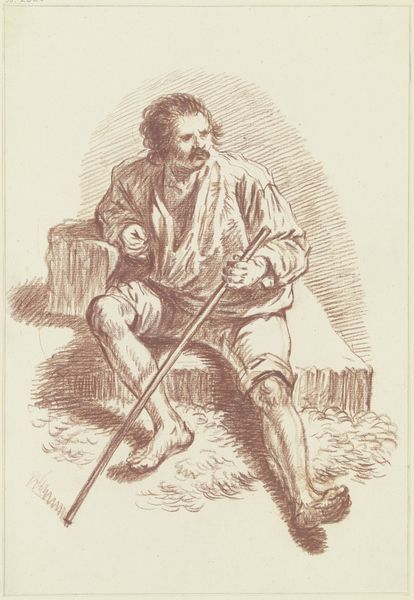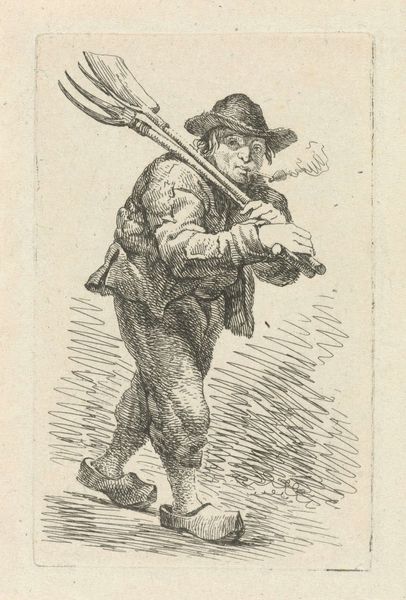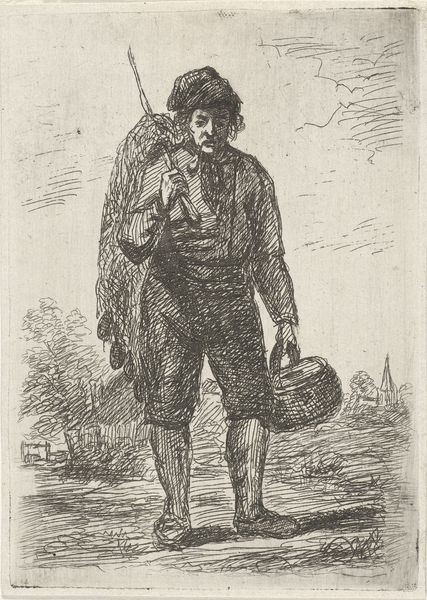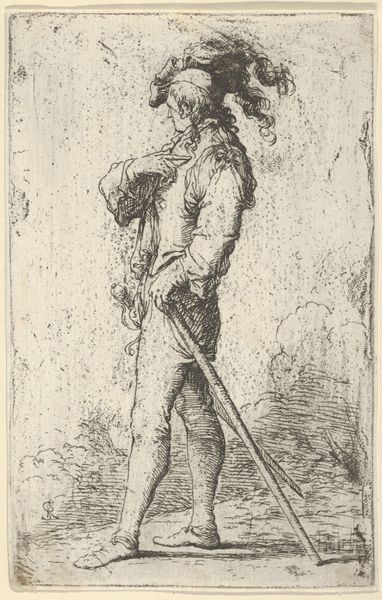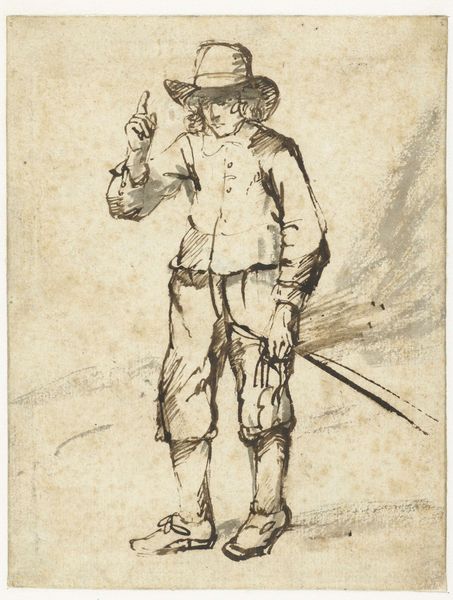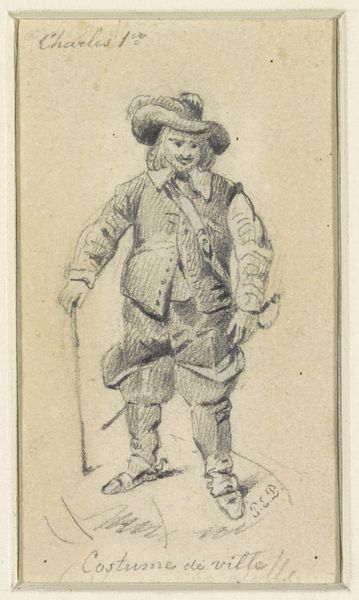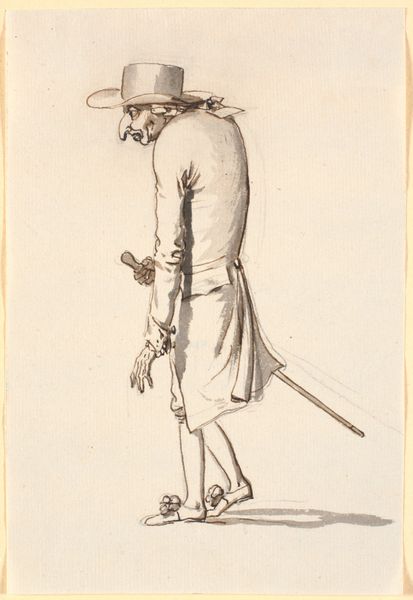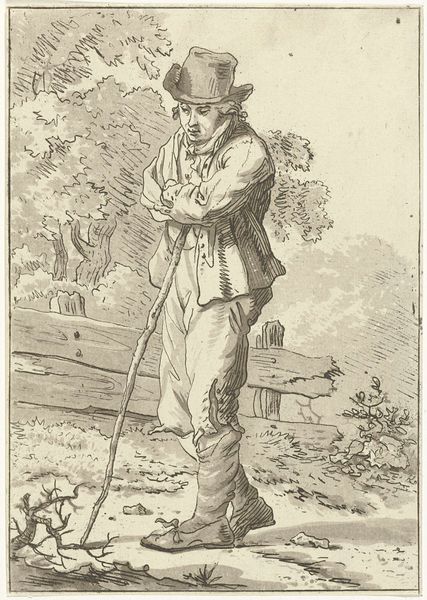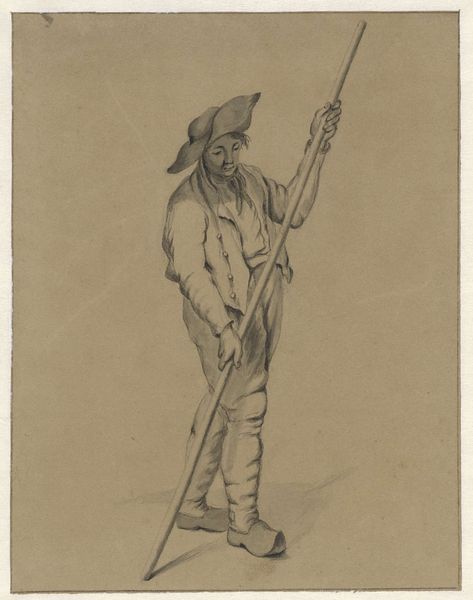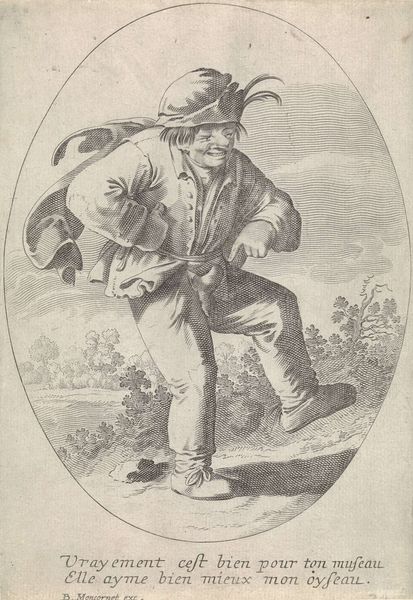
drawing, red-chalk, dry-media, pencil
#
portrait
#
pencil drawn
#
drawing
#
red-chalk
#
pencil sketch
#
figuration
#
dry-media
#
pencil drawing
#
pencil
#
15_18th-century
#
line
#
history-painting
#
academic-art
#
realism
Copyright: Public Domain
Curator: We're looking at "Stehende männliche Modellfigur mit Stange," a drawing currently held in the Städel Museum. Attributed to Friedrich Wilhelm Hirt, the artwork employs the dry media technique of red chalk. Editor: I'm immediately struck by the sketchiness of the lines and the man's quizzical expression. It feels like a moment caught, not really posed. The crosshatching creates a sort of atmospheric tension. Curator: It is interesting you note the sketchiness as that suggests the hand of the artist in academic study. Consider that this drawing embodies features associated with realism and portraiture within academic art practices of the 18th century. Red chalk, in particular, was a favored medium for its ability to render form with both precision and sensitivity. Its popularity among European academies speaks to its function in an age dominated by instruction. Editor: True, there's definitely a pedagogical feeling here. He seems caught between roles, this figure – model, soldier, actor? Is he at rest or caught in media res of some larger gesture, with that long pole as his odd scepter. He seems so unsure! Curator: The material itself contributes significantly. Red chalk allowed for easy correction and layering, crucial for the academic process. It blends readily and can also be easily erased; such practical functionality aligns seamlessly with workshop demands, making this figure a possible byproduct of educational production. Editor: All these tight hatches really suggest to me the man and material both under academic lock and key, a method-actor soldier's pose, maybe? Curator: Exactly. Consider how drawings like this would have circulated—used by pupils in the academy for copying and adapting classical forms. These drawings, with their direct link to artistic training, were quite mobile; the exchange, transportation, and commerciality of the knowledge contained becomes an implicit element when analyzing the image’s artistic and historical relevance. Editor: Thinking about this sketch as a teachable tool transforms it—suddenly, those tentative lines take on new significance as an artist experiments, refines. Even those shaded crosshatches become exercises. Curator: Absolutely, this shifts it beyond a portrait and into the sphere of artistic labor. Editor: Thinking of it now, its mood now for me turns studious, reflective... Curator: Precisely, moving past the visual and emphasizing labor shows us that value isn't just in its visual finesse but inherent in its utility.
Comments
No comments
Be the first to comment and join the conversation on the ultimate creative platform.
